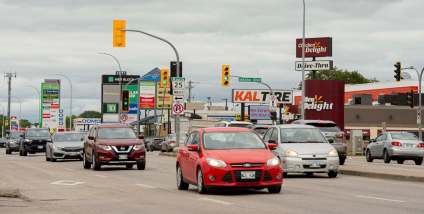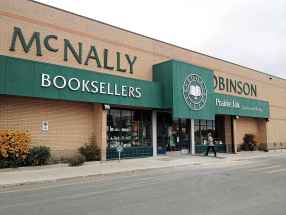Shelter, for the time being Homeless in encampments along river anticipate population growth after city clears areas under, near bridges; fear they could be targeted next
Read this article for free:
or
Already have an account? Log in here »
To continue reading, please subscribe:
Monthly Digital Subscription
$0 for the first 4 weeks*
- Enjoy unlimited reading on winnipegfreepress.com
- Read the E-Edition, our digital replica newspaper
- Access News Break, our award-winning app
- Play interactive puzzles
*No charge for 4 weeks then price increases to the regular rate of $19.00 plus GST every four weeks. Offer available to new and qualified returning subscribers only. Cancel any time.
Monthly Digital Subscription
$4.75/week*
- Enjoy unlimited reading on winnipegfreepress.com
- Read the E-Edition, our digital replica newspaper
- Access News Break, our award-winning app
- Play interactive puzzles
*Billed as $19 plus GST every four weeks. Cancel any time.
To continue reading, please subscribe:
Add Free Press access to your Brandon Sun subscription for only an additional
$1 for the first 4 weeks*
*Your next subscription payment will increase by $1.00 and you will be charged $16.99 plus GST for four weeks. After four weeks, your payment will increase to $23.99 plus GST every four weeks.
Read unlimited articles for free today:
or
Already have an account? Log in here »
Hey there, time traveller!
This article was published 08/10/2021 (1522 days ago), so information in it may no longer be current.
On a scenic stretch of land along the Red River, encampments sheltering homeless Winnipeggers sit below and beyond large, expensive homes.
A man wrings out a shirt. Nearby lawn chairs sit precariously close to the river. One encampment adjacent to a walking path near the Louis Bako River Landing canoe launch just off Higgins Avenue at Annabella Street, is filled with everything from furniture to cooking tools to children’s toys.
Some of the unhoused take shelter here, away from the concrete bridges. Now that word has got around about the city breaking up encampments under bridges, some living on the riverbank are expecting to see new faces soon.
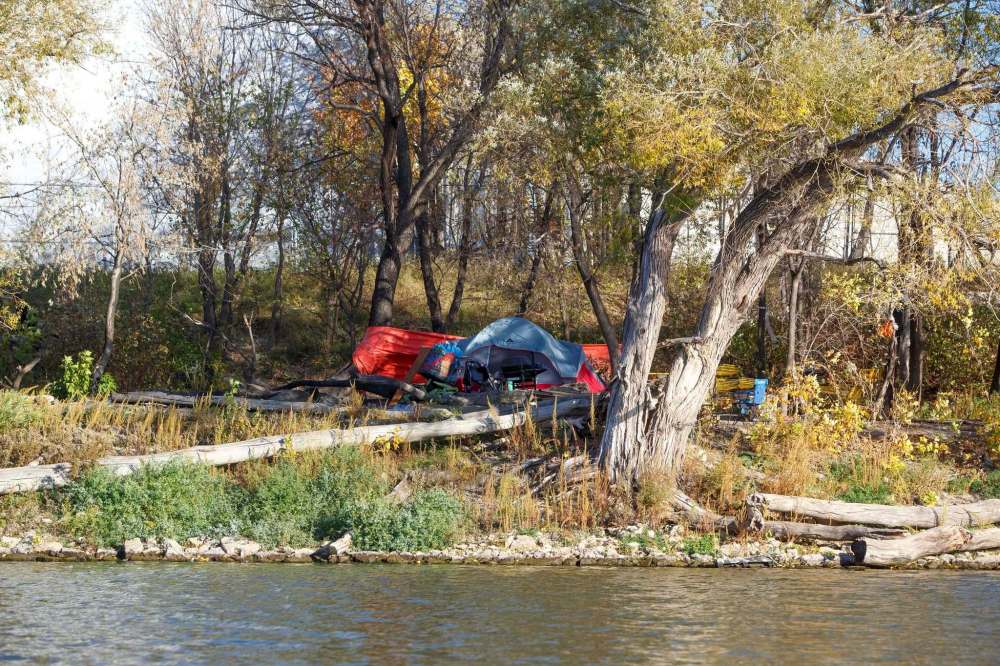
This is one of the safest and most comfortable places for someone experiencing homelessness in Winnipeg to be, says a man digging a fire pit.
“The city doesn’t care about the homeless, we’re just a statistic to them,” he says.
And while the soft and uneven terrain along the river might not offer the safety — by comparison — of the concrete under a bridge, the risk is outweighed by the reward, says the 50 year old.
“It’s better to wake up to that than to a bunch of traffic,” he says, referring to the relatively serene river scene.
Last February, a fire ignited an aerosol can, killing someone at an encampment in this area. It’s a safety risk the city says is behind its new no-tolerance policy for people living under bridges. Rules that went into effect Oct. 1 ban “camping and/or gathering” under bridges. Any encampments within three metres of a bridge structure will be cleared out.
There have been 94 recorded fires under or near bridges this year, and the city will be “prohibiting re-occupation of the space,” a spokesperson said in an email.
“We will continue to work closely with our network of supports to help relocate these residents or to assist them with accessing transitional housing if they wish. The city will continue to cover the initial cost of transitional housing for residents who choose this option,” he said Friday, adding areas already cleared will be revisited if the city receives reports of new encampments.
It’s End Homelessness Winnipeg CEO Jason Whitford’s first week on the job, and he says his first priority is ensuring the encampment clearing is carried out smoothly for the people living there.
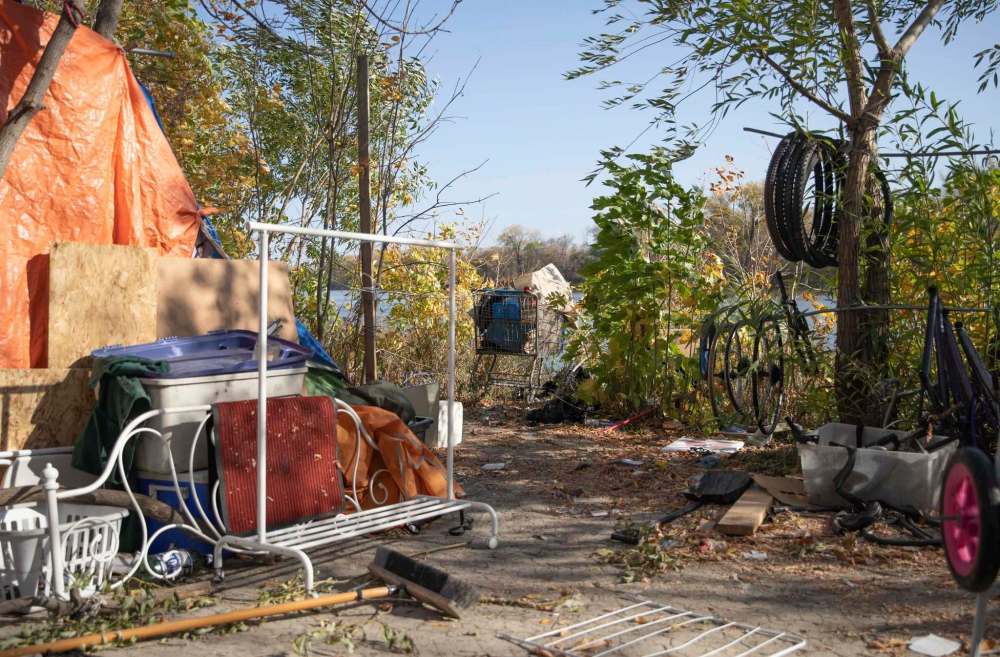
“Bridges are part of Winnipeg’s infrastructure, they were never intended to be shelter of any means for people, that’s not a humane type of shelter, and not in a humane way to live,” Whitford says. “I do understand and support the city’s action towards that, they are an unsafe area. The fires that are oftentimes used for warmth could create more devastation.”
He estimates there are approximately 115 encampments with five to 10 people living in each around Winnipeg.
When it comes to supporting the homeless population the city has a long way to go, but the decision was made with the best interests of the community in mind, Whitford says.
“There is no bad guy in this situation. I think that it’s maybe viewed that way, that the city is the bad guy for taking down these encampments,” he says. “And the city is acting in the best interests of the broader community, including the homeless population.”
One local activist disagrees.
Steven Champagne works with People Over Profit Winnipeg, a collective of organizers that works to get socialist and ecologically aware candidates into municipal politics and advocates for housing for all. The group has been critical of the decision made by the city, calling it a further injustice against a community already mistreated by municipal politicians.
“The institution itself and city councillors love to discuss ‘public safety’… that is focused on making a certain segment of society feel safe, and all it does is further entrench systemic discrimination and abuse against those who are already experiencing the full brunt of it,” he says.
Money spent on signage and moving people around could be better spent on myriad social goods, including public housing, safe injection sites and other community services people experiencing homelessness could utilize, Champagne says.
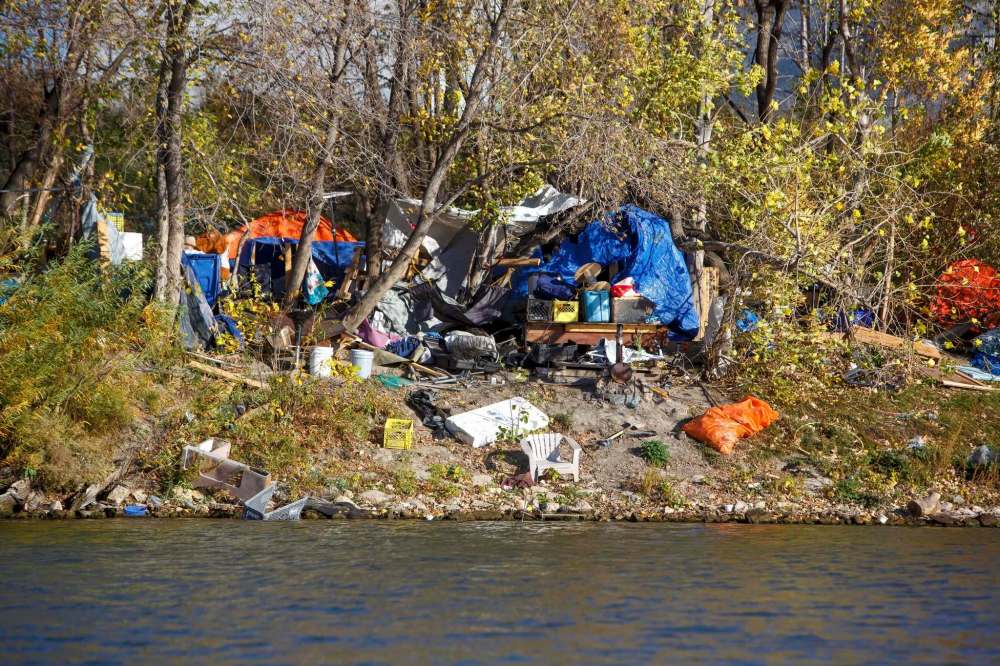
“We can’t say enough about the complete failure of the city, city administration and elected officials, in terms of what they’ve done with public housing, which is something that absolutely needs to be constructed and put in place to help folks experiencing homelessness,” he says.
The man living along the riverbank has finished setting up the fire pit and takes to a nearby couch.
He says the city’s reasoning is difficult to swallow, considering even small requests from people in his encampment to city workers who have visited over the last few weeks have been ignored.
They asked for help hauling garbage away from the riverbank.
“They’re not really doing anything to help us,” he says. “There’s 25 warehouses in downtown Winnipeg that’re empty — why couldn’t you set up people in something like that?”
He doesn’t know whether his camp will be targeted — the city has said the new enforcement policy is focused under and near bridges — but won’t be surprised if it is.
“It’s just going to get worse,” he says. “If they keep moving us, we’re going to keep finding spots to go.”
— With files from Julia-Simone Rutgers

malak.abas@freepress.mb.ca
Twitter: malakabas_

Our newsroom depends on a growing audience of readers to power our journalism. If you are not a paid reader, please consider becoming a subscriber.
Our newsroom depends on its audience of readers to power our journalism. Thank you for your support.
History
Updated on Friday, October 8, 2021 7:53 PM CDT: Adds missing word, the, in third paragraph

